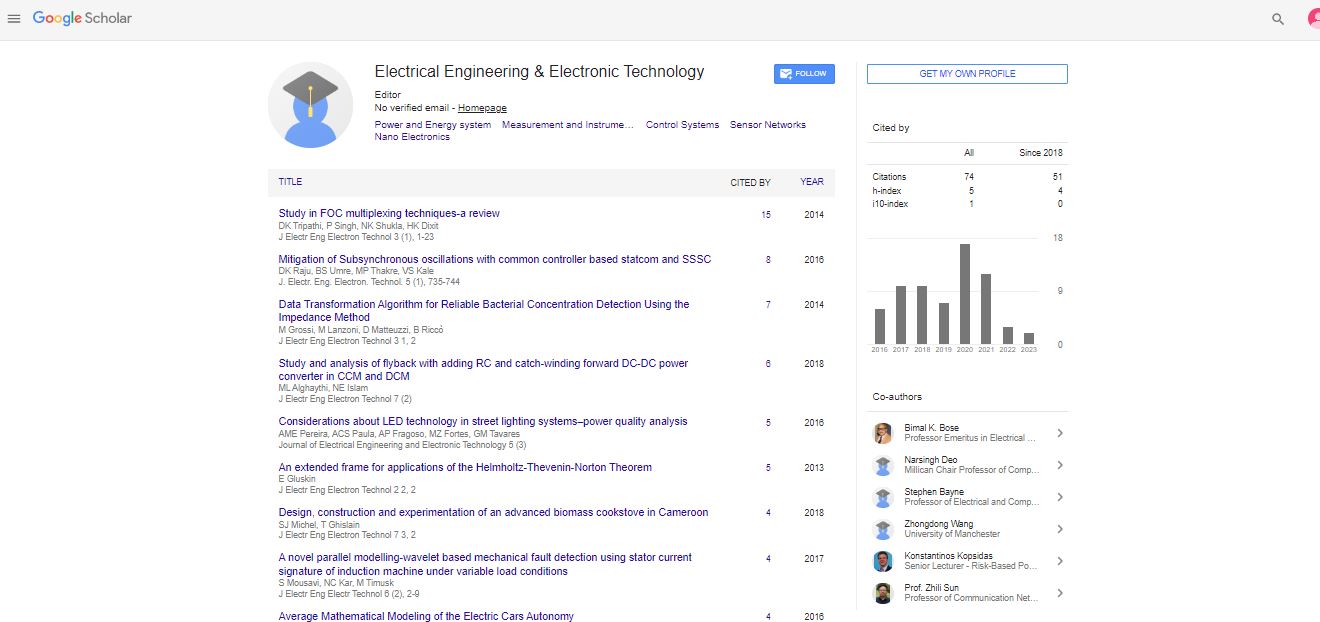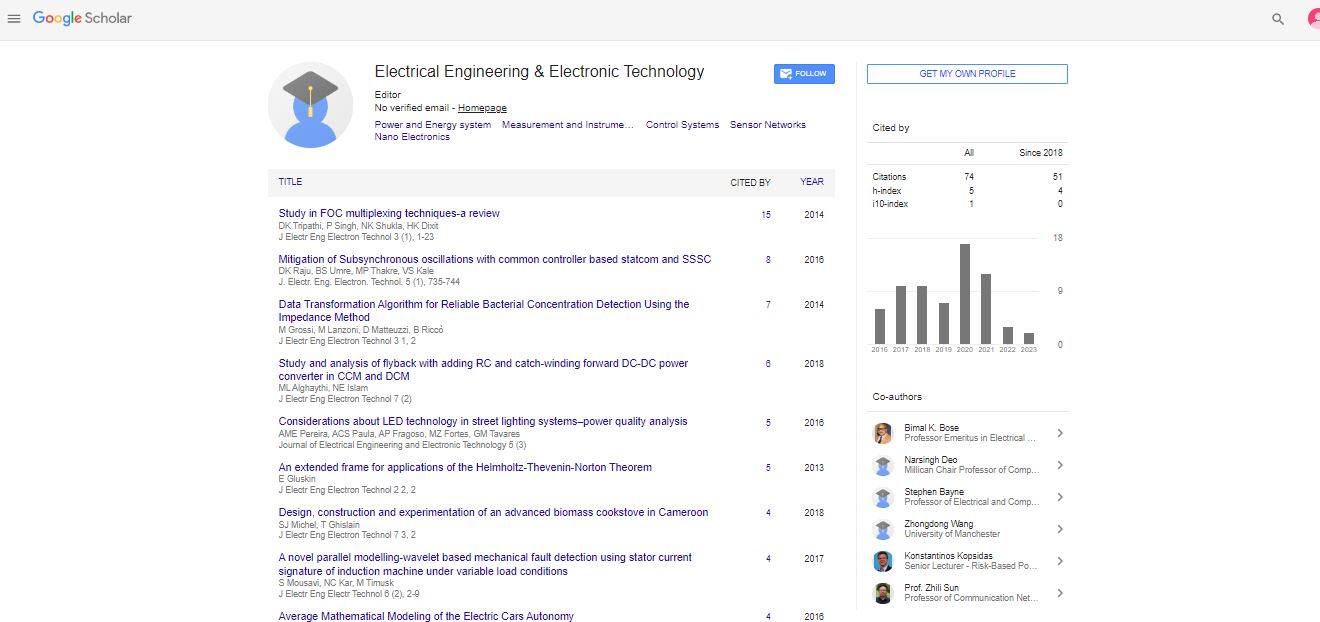Editorial, J Electr Eng Electron Technol Vol: 10 Issue: 8
Regenerative Slowing Down is an Exceptional Strategy that is utilized in EVS to Catch Energy
Anika Cohen*
Department of Electrical Engineering, University of Nairobi, Nairobi, Kenya
*Corresponding author: Anika C, Department of Electrical Engineering, University of Nairobi, Nairobi, Kenya, Tel: 1 4069995364; E-mail: anika.cohen@gmail.com
Received date: August 01, 2021; Accepted date: August 16, 2021; Published date: August 23, 2021
Abstract
Regenerative slowing down transforms your vehicle's motor energy into power to charge its battery and lift proficiency. The subsequent erosion works to back the vehicle off, producing warmth and eroding at the material on the cushions and plates all the while. Regenerative slowing down is an energy recuperation system that hinders a moving vehicle or article by changing over active energy into a structure can be either utilized promptly or put away until required. Productivity of the regenerative slowing down measure fluctuates across numerous vehicles, engines, batteries and regulators, however is regularly something to the tune of 60%-70% effective. This essentially implies that 70% of the motor energy lost during the demonstration of slowing down can be turned around into speed increase later. Regen eases back the vehicle through the engine; it doesn't utilize the brake cushions by any stretch of the imagination. Brake cushions are possibly utilized when the brake is applied, which is isolated from regen. Regenerative brakes are an amazingly imaginative element since they help reenergize the battery while in a hurry and they likewise bring about less base brake wear, so they last more than non-regenerative brakes. Augment Regenerative Braking.
Introduction
Regenerative slowing down transforms your vehicle's motor energy into power to charge its battery and lift proficiency. The subsequent erosion works to back the vehicle off, producing warmth and eroding at the material on the cushions and plates all the while. Regenerative slowing down is an energy recuperation system that hinders a moving vehicle or article by changing over active energy into a structure can be either utilized promptly or put away until required. Productivity of the regenerative slowing down measure fluctuates across numerous vehicles, engines, batteries and regulators, however is regularly something to the tune of 60%-70% effective. This essentially implies that 70% of the motor energy lost during the demonstration of slowing down can be turned around into speed increase later. Regen eases back the vehicle through the engine; it doesn't utilize the brake cushions by any stretch of the imagination. Brake cushions are possibly utilized when the brake is applied, which is isolated from regen. Regenerative brakes are an amazingly imaginative element since they help reenergize the battery while in a hurry and they likewise bring about less base brake wear, so they last more than non-regenerative brakes. Augment Regenerative Braking.
 Spanish
Spanish  Chinese
Chinese  Russian
Russian  German
German  French
French  Japanese
Japanese  Portuguese
Portuguese  Hindi
Hindi 
